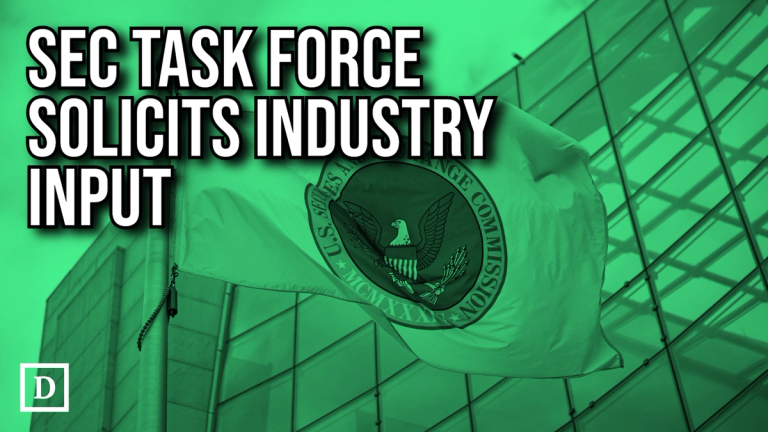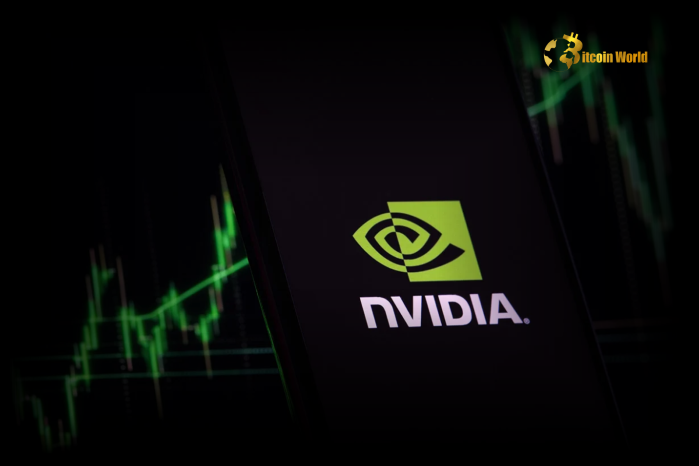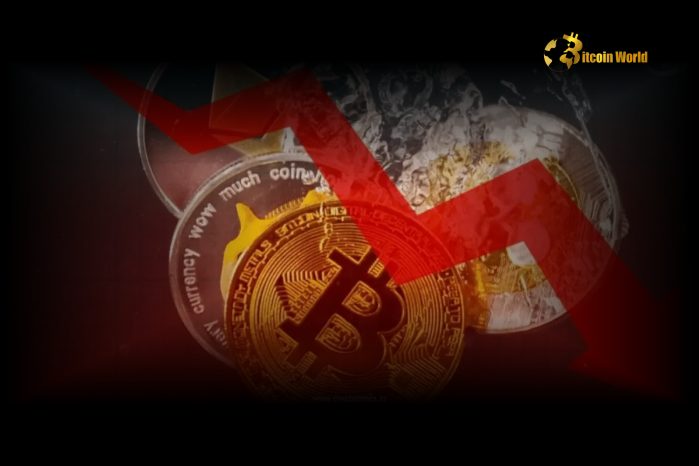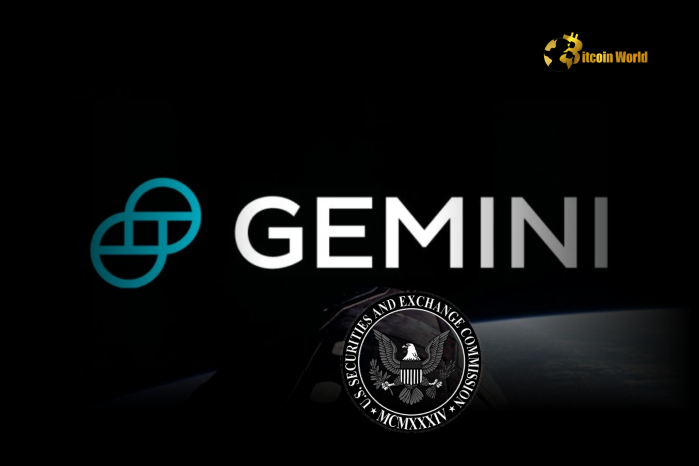
Dogecoin (DOGE) is trading at key demand levels after two weeks of intense selling pressure, with bears driving DOGE down over 30%. The broader crypto market has faced a prolonged correction that started in mid-January, but meme coins have been the most impacted. As the market leader in the meme coin sector, Dogecoin has suffered extreme volatility, testing lower support levels as investor sentiment remains bearish. Related Reading: XRP Breaks Down Below Key Demand – Analyst Expects A Drop To $1.65 Glassnode’s on-chain metrics reveal that long-term Dogecoin holders are in “denial”, signaling growing uncertainty among those who have held DOGE for extended periods. The DOGE Long-Term Holder Net Unrealized Profit/Loss (NUPL) indicator has been in a declining trend, meaning that many long-term holders are seeing diminishing unrealized profits or even slipping into losses. This trend suggests that holders who once remained confident in Dogecoin’s long-term potential are now facing market doubt and may consider selling if conditions don’t improve. As DOGE trades near crucial support, the next few days will be critical for determining whether bulls can reclaim control and push for recovery or if selling pressure will continue, forcing DOGE into deeper correction territory. Bitcoin and the whole market are setting fresh lows, and this week will be crucial for bulls to defend key demand at these levels. Dogecoin Crashes: Can Bulls Regain Control? Dogecoin has experienced a massive sell-off, plunging more than 59% from its December high of around $0.48 to a recent low of $0.19. This dramatic decline has fueled panic across the market, with sentiment deteriorating further as many analysts begin calling for the start of a bear market. The downturn has weakened investors’ confidence, and meme coins—once the hottest sector in the market—are now facing the harshest corrections. Despite the ongoing decline, on-chain data suggests not all hope is lost for DOGE. Crypto analyst Ali Martinez shared Glassnode metrics indicating that long-term Dogecoin holders are in “denial”, according to the DOGE Long-Term Holder Net Unrealized Profit/Loss (NUPL) indicator. This data suggests that many long-term investors are still holding onto their DOGE despite the downturn but are starting to grow tired of the prolonged downtrend. Historically, such “denial phases” can precede either a final capitulation or a strong rebound if bulls reclaim control. Related Reading: Solana Loses Long-Term Support Level – Analyst Shares Insights The upcoming week will be crucial in determining whether Dogecoin can bounce back from current levels or if sellers will continue to dominate. If DOGE manages to hold key support levels and reclaim momentum, a relief rally could be in sight. However, if selling pressure persists, the price may continue trending downward, extending the correction further. Dogecoin Price Struggles After 19% Drop Dogecoin is trading at $0.21 after a sharp 19% drop since Monday, continuing its downward trajectory amid broader market weakness. The meme coin sector has been one of the hardest hit in recent weeks, with DOGE struggling to find strong support as selling pressure remains dominant. Bulls now face a critical test as holding above current levels is essential to avoid further downside. To initiate a recovery rally, DOGE needs to reclaim the $0.24 mark, a key resistance level that could signal the start of an uptrend. However, market sentiment remains cautious, and price action suggests that DOGE could enter a consolidation phase below this level before any meaningful recovery begins. Related Reading: Litecoin Trading Activity Increases Over The Past Month – Potential LTC ETF Draws Speculation If Dogecoin fails to hold above $0.21, bears may continue pushing the price lower, potentially revisiting previous support levels. However, if buyers step in and DOGE stabilizes, it could build momentum for a future push toward higher prices. In the short term, traders should closely watch whether bulls can defend current demand levels and reclaim key resistance levels to confirm a potential reversal in price action. Featured image from Dall-E, chart from TradingView
NewsBTC
You can visit the page to read the article.
Source: NewsBTC
Disclaimer: The opinion expressed here is not investment advice – it is provided for informational purposes only. It does not necessarily reflect the opinion of BitMaden. Every investment and all trading involves risk, so you should always perform your own research prior to making decisions. We do not recommend investing money you cannot afford to lose.
Bank of America Aims to Launch New Cryptocurrency in Response to Legal Developments

Bank of America is planning a cryptocurrency launch linked to the U.S. dollar. Continue Reading: Bank of America Aims to Launch New Cryptocurrency in Response to Legal Developments The post Bank of America Aims to Launch New Cryptocurrency in Response to Legal Developments appeared first on COINTURK NEWS . NewsBTC

Urgent Call: Sen. Lummis Champions Landmark Crypto Regulation with FIT21 and GENIUS Act
In a powerful move that could redefine the future of digital assets in the United States, Senator Cynthia Lummis has stepped into the spotlight, urging immediate action on two groundbreaking pieces of legislation: the Financial Innovation and Technology for the 21st Century Act (FIT21) and the Stablecoin Act, also known as the GENIUS Act. For anyone invested in the burgeoning world of cryptocurrencies, this is a pivotal moment. Let’s dive into what these bills mean and why Senator Lummis’s advocacy is making waves in the ongoing saga of crypto regulation . Why is Senator Lummis Pushing for Crypto Regulation Now? Senator Lummis, a well-known advocate for responsible innovation in the digital asset space, has consistently emphasized the need for clear and concise rules to govern the cryptocurrency market. Her recent call to action during a congressional hearing underscores the growing bipartisan consensus that the U.S. needs to establish a robust framework for crypto regulation to foster growth while protecting consumers and investors. The urgency stems from several factors: Investor Protection: The current lack of clarity leaves investors vulnerable to fraud and market manipulation. Clear regulations can provide a safety net and boost confidence in the market. Innovation and Growth: Ambiguity stifles innovation. A well-defined regulatory landscape can encourage businesses to build and innovate within the crypto space in the U.S., rather than moving overseas. Global Competitiveness: Other countries are actively developing their crypto regulations. The U.S. risks falling behind if it doesn’t establish its own framework, potentially losing out on economic opportunities. Market Stability: Unregulated markets can be volatile. Clear rules can contribute to a more stable and predictable crypto environment. Senator Lummis believes that FIT21 and the GENIUS Act are crucial steps towards achieving these goals. Let’s break down each bill to understand their individual significance. Decoding the FIT21 Act: A New Dawn for Crypto Classification? The Financial Innovation and Technology for the 21st Century Act, or FIT21 Act , is arguably the more comprehensive of the two bills. Its primary aim is to provide much-needed clarity on how cryptocurrencies should be classified under U.S. law. Currently, the debate often revolves around whether a cryptocurrency should be considered a security or a commodity. This distinction is critical because it determines which regulatory agency—the Securities and Exchange Commission (SEC) or the Commodity Futures Trading Commission (CFTC)—has jurisdiction. Here’s a simplified breakdown of what the FIT21 Act proposes: Key Feature Description Primary Classification Classifies most cryptocurrencies as commodities rather than securities. Regulatory Agency Grants the Commodity Futures Trading Commission (CFTC) primary regulatory authority over crypto commodities. Decentralization Focus Emphasizes the degree of decentralization of a cryptocurrency network in determining its classification. More decentralized networks are more likely to be considered commodities. Clarity for Businesses Aims to provide a clear legal framework for crypto businesses to operate within, reducing uncertainty and encouraging compliance. By classifying cryptocurrencies as commodities, the FIT21 Act seeks to recognize the unique nature of these digital assets and apply a regulatory approach that is more suited to their decentralized and transactional characteristics. This move could potentially unlock significant innovation and investment in the crypto space, as it provides a more predictable and less burdensome regulatory path compared to being classified as securities. The GENIUS Act: Taming the Wild West of Stablecoins? The Stablecoin Act, or GENIUS Act (though it’s officially known by a longer, more formal title), zeroes in on stablecoins, a type of cryptocurrency designed to maintain a stable value, typically pegged to a fiat currency like the U.S. dollar. Stablecoins have become increasingly important in the crypto ecosystem, serving as a bridge between traditional finance and digital assets. However, their rapid growth has also raised concerns about their stability, reserves, and potential risks to the financial system. The GENIUS Act aims to establish a clear regulatory framework specifically for stablecoins. Here’s what it entails: Federal Oversight: Proposes federal oversight of stablecoin issuers, likely under a banking regulator or a newly designated agency. Reserve Requirements: Seeks to mandate that stablecoin issuers hold adequate reserves to back their stablecoins, ensuring that they can maintain their peg and meet redemption requests. Transparency and Auditing: Aims to increase transparency by requiring regular audits and public disclosure of stablecoin reserves and operations. Consumer Protection: Focuses on protecting consumers by ensuring stablecoin stability and providing recourse in case of issuer failure. The GENIUS Act is particularly timely given the rapid expansion of the stablecoin market and the potential systemic risks associated with these assets. By establishing clear rules for stablecoin issuers, the legislation aims to foster trust and stability in this critical segment of the crypto market, paving the way for broader adoption and integration with the traditional financial system. Bipartisan Support: A Ray of Hope for Crypto Legislation? One of the most encouraging aspects of the push for FIT21 and the GENIUS Act is the bipartisan support it’s garnering. As The Block reported, lawmakers from both sides of the aisle are recognizing the need to advance stablecoin legislation and broader crypto regulation in the new Congress. This bipartisan momentum is crucial because it increases the likelihood of these bills moving forward and eventually becoming law. In a politically polarized environment, finding common ground on complex issues like crypto regulation is a significant achievement and signals a growing understanding of the importance of this sector. Why is bipartisan support so vital? Increased Probability of Passage: Bipartisan bills have a much higher chance of passing through both houses of Congress and being signed into law by the President. Political Stability: Bipartisan support ensures that crypto regulation is less likely to be drastically altered with changes in political power, providing long-term stability for the industry. Broader Acceptance: Bipartisan consensus can help build public trust and acceptance of crypto assets by demonstrating that regulation is not a partisan issue but a matter of national economic and technological importance. Senator Lummis’s call for action is therefore not just a voice from one side of the political spectrum but represents a growing consensus that spans party lines. This unified front significantly strengthens the prospects for meaningful crypto regulation in the U.S. What are the Potential Benefits of FIT21 and the GENIUS Act? If FIT21 and the GENIUS Act are successfully passed and implemented, the potential benefits for the crypto industry and the broader U.S. economy are substantial: Clarity and Certainty: The most immediate benefit is the clarity these bills would provide. Businesses and investors would have a much clearer understanding of the rules of the game, reducing legal and regulatory uncertainty. Attracting Investment: Clear regulations can attract significant investment into the crypto space. Institutional investors, in particular, are more likely to enter the market when there is a well-defined regulatory framework. Fostering Innovation: By providing a predictable regulatory environment, these bills can encourage innovation in crypto technologies and applications. Businesses can focus on building and growing without constant fear of regulatory crackdowns. Consumer Protection: Both bills prioritize consumer protection, whether through stablecoin reserve requirements or clearer rules for crypto exchanges and service providers. This can enhance trust and confidence in the market. Global Leadership: By establishing a comprehensive and forward-looking regulatory framework, the U.S. can reassert its leadership in financial innovation and technology, attracting crypto businesses and talent from around the world. These benefits are not just theoretical. Countries that have already implemented clear crypto regulations, like some in Europe and Asia, are seeing increased investment and innovation in their digital asset sectors. The U.S. has the potential to unlock similar growth by embracing sensible and forward-thinking crypto regulation . Challenges and the Road Ahead While the momentum behind FIT21 and the GENIUS Act is encouraging, the path to passage is not without its challenges. Here are some hurdles that need to be overcome: Regulatory Turf Wars: There may be ongoing debates and negotiations between different regulatory agencies (SEC, CFTC, banking regulators) regarding their respective roles and jurisdictions under these new laws. Lobbying and Opposition: Incumbent financial institutions and other interest groups may lobby against certain aspects of these bills, seeking to protect their existing market positions. Complexity of Implementation: Even if passed, implementing these laws will be a complex undertaking, requiring detailed rule-making and coordination among various agencies. Evolving Technology: The crypto space is rapidly evolving. Regulations need to be flexible and adaptable to keep pace with technological advancements and prevent unintended consequences. Despite these challenges, the bipartisan support and the clear need for crypto regulation provide a strong foundation for moving forward. Senator Lummis’s vocal advocacy is a crucial catalyst in pushing these important conversations and legislative efforts ahead. Conclusion: A Pivotal Moment for Crypto in the U.S. Senator Cynthia Lummis’s urgent call for the passage of the FIT21 and GENIUS Act marks a pivotal moment in the quest for clear and effective crypto regulation in the United States. These bills represent a significant step towards establishing a framework that can foster innovation, protect consumers, and ensure market stability in the rapidly evolving digital asset landscape. With bipartisan support growing and the need for clarity becoming increasingly pressing, the crypto industry and its stakeholders are watching closely to see if this moment will translate into landmark legislation that shapes the future of finance. The potential is immense, and the time for action, as Senator Lummis emphasizes, is now. To learn more about the latest crypto regulation trends, explore our article on key developments shaping crypto policy and legal frameworks. NewsBTC











